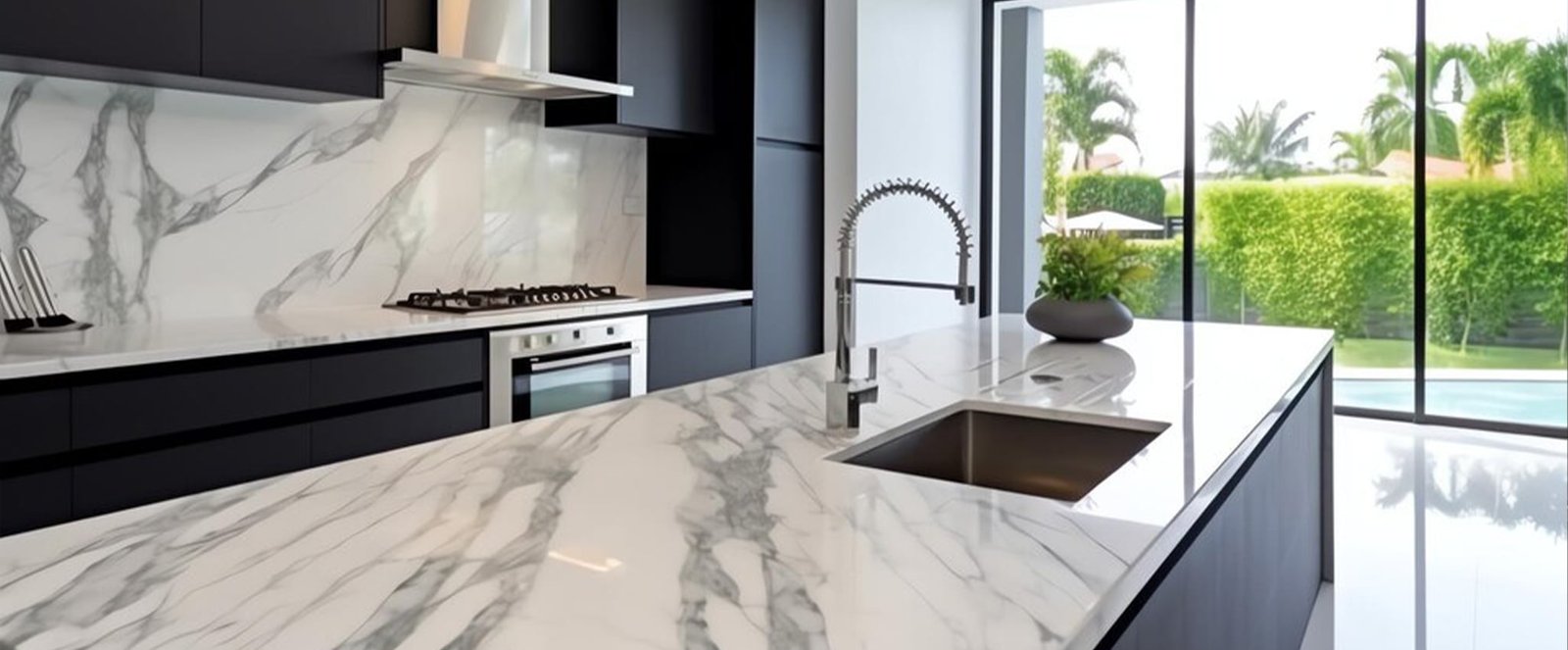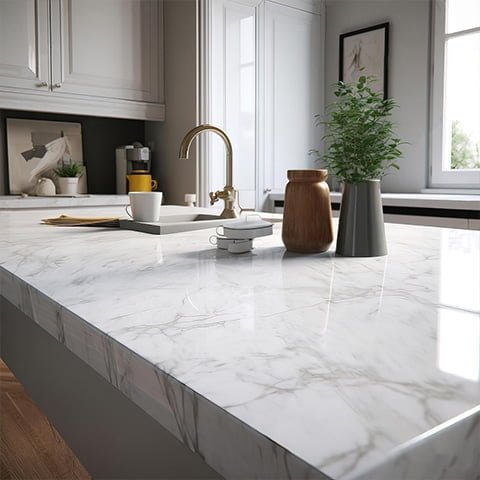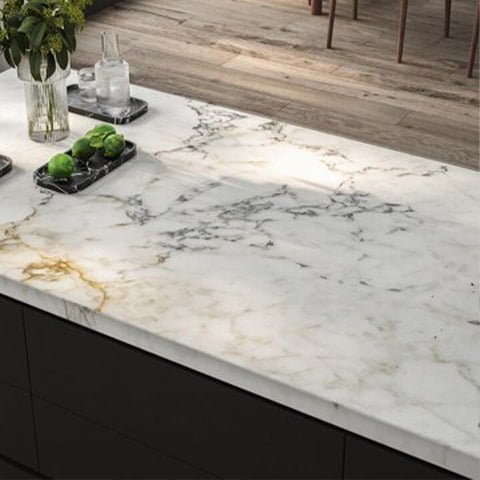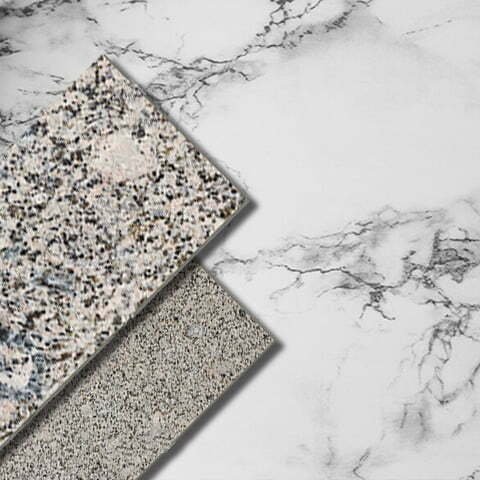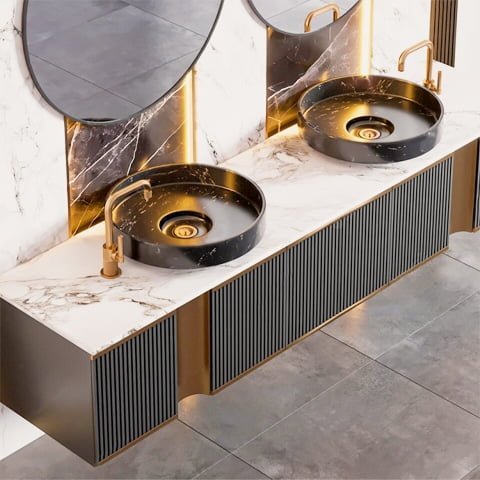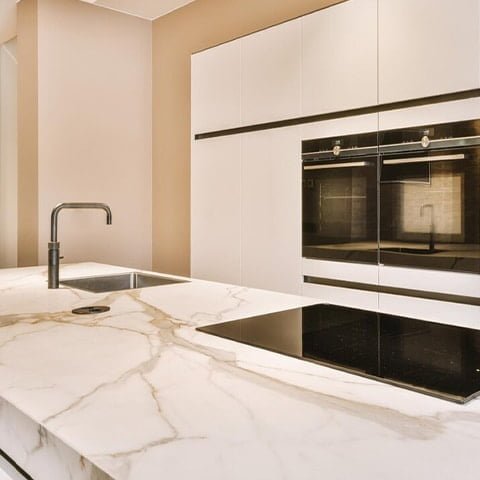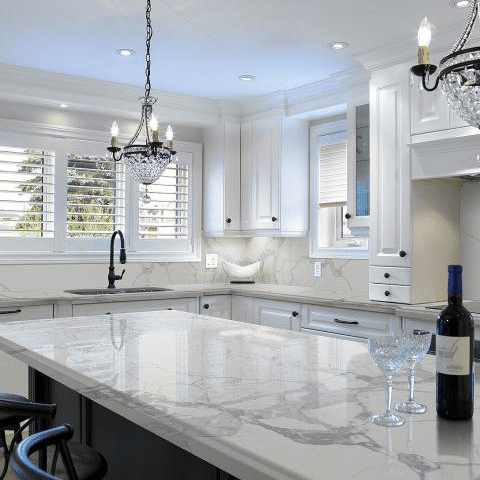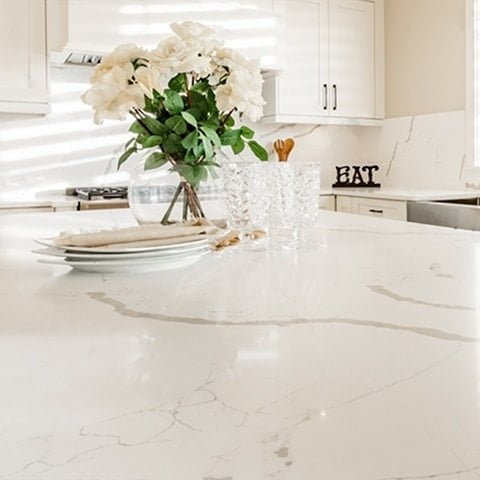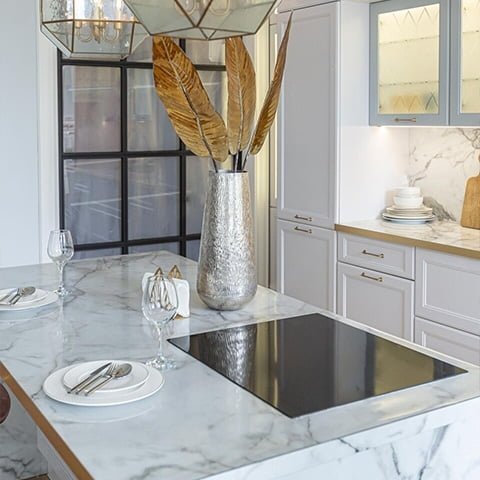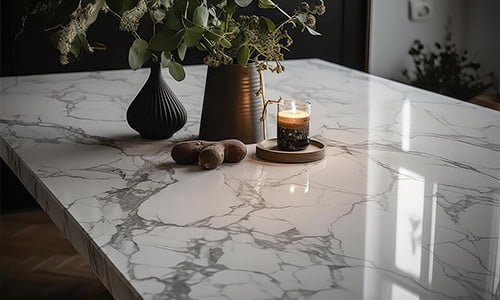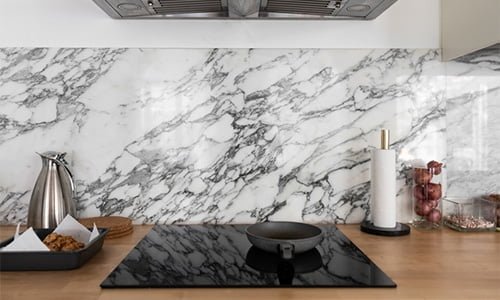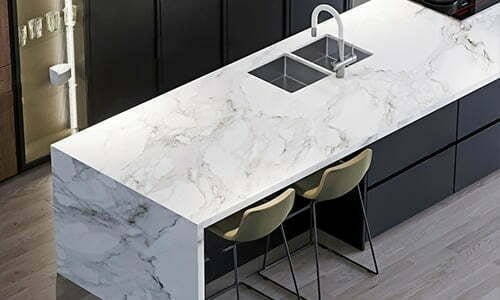Manufacturing process:
The manufacturing process of quartz stone is a fascinating blend of art and science, resulting in surfaces that embody both beauty and strength. It begins with the careful selection of high-quality quartz crystals, known for their remarkable durability and natural elegance. These crystals are crushed into precise sizes to create the raw material for quartz slabs.
Next comes the meticulous mixing phase, where the quartz crystals are combined with resins and pigments. This step allows for a wide range of colors and patterns to be introduced, giving quartz its renowned aesthetic versatility. The precise ratios and thorough blending of these components are essential to achieve consistency and uniformity in the final product.
Once the mixture is perfected, it’s poured into molds. These molds are specially designed to accommodate various slab sizes and thicknesses. During this stage, the material is carefully leveled, ensuring a flat and even surface. To eliminate any trapped air and create a dense, uniform structure, a vacuum and vibration process is employed. This crucial step guarantees the exceptional durability that quartz is known for.
After compression, the slabs are cured in a controlled environment. This allows the resins to harden and the material to solidify further, ensuring long-term stability and strength. The curing process is followed by precision polishing, where the surface is meticulously smoothed to a high shine. This final touch not only enhances the visual appeal of quartz but also contributes to its resistance against stains and everyday wear.
Colors and Patterns:
Quartz tiles offer an extensive array of options when it comes to colors and patterns. You can choose from a diverse palette of hues, including timeless classics like white, gray, black, and gold. However, the beauty of quartz extends beyond its color spectrum. These tiles can be found in various captivating patterns, from solid, uniform surfaces to intricate designs adorned with delicate veining. For those who desire the elegance of natural stone without the maintenance, quartz tiles can even replicate the look of materials like marble, granite, or limestone. This versatility ensures that quartz tiles can seamlessly complement any design vision, from contemporary minimalism to classic opulence.
Styles in designs:
- Modern: Quartz is a popular choice for modern designs due to its sleek and sophisticated look. In modern designs, quartz is often used in solid colors with a polished finish, or with minimal veining and patterns.
- Traditional: Quartz can also be used in traditional designs, where it can mimic the look of natural stone such as marble or granite. In traditional designs, quartz is often used in warm, neutral colors with subtle veining and patterns.
- Industrial: Quartz can be used in industrial designs to add a touch of modern sophistication. In industrial designs, quartz is often used in darker shades with a matte finish.
- Glamorous: Quartz can also be used to create a glamorous and luxurious look, particularly when used in bold colors or with metallic accents. In glamorous designs, quartz is often used with a high gloss finish and intricate patterns.
Finishes:
A polished finish for quartz is achieved through a meticulous manufacturing process that involves grinding down the surface of the quartz slab to a smooth, glossy, and reflective sheen. This finish enhances the natural luster of quartz, giving it a luxurious and sophisticated appearance. Polished quartz finds versatile applications, including countertops for kitchens and bathrooms, interior wall cladding, flooring in low-traffic areas, and stair treads for added luxury. Its advantages include an aesthetic appeal that adds sophistication to spaces, enhanced durability, low maintenance requirements, and hygienic properties due to its non-porous nature. This versatile finish complements various interior design styles and boasts longevity when properly maintained, making it a lasting investment in your space.
Applications:
Quartz tiles can be used for a variety of applications, including:
- Flooring: Quartz tiles are highly durable and scratch-resistant, making them a popular choice for high-traffic areas like kitchens, bathrooms, and entryways.
- Walls: Quartz tiles can be used to create a statement wall in living areas, fireplaces walls or backsplash in a kitchen and bathroom.
- Countertops: Quartz tiles can be used to create a stunning and functional countertop surface in a kitchen or bathroom.
Advantages:
- Durability: Quartz tiles are highly durable and resistant to scratches, chips, and cracks. They are also resistant to heat and moisture, making them ideal for use in kitchens and bathrooms.
- Aesthetics: Quartz tiles have a high-end look and feel, and can be customized to fit any design aesthetic. They are available in a wide range of colors, patterns, and textures, and can be used to create unique and eye-catching designs.
- Low Maintenance: Quartz tiles are easy to clean and maintain, and require minimal upkeep. They can be cleaned with a simple soap and water solution and do not require any special cleaners or sealers.
Installment process:
The installation process of quartz stone typically involves several steps to ensure a proper and secure fit in your desired space. Here’s an overview of the typical installation process for quartz countertops:
- Measurement and Template: First, a professional installer will visit your home or project site to take precise measurements of the area where the quartz countertops will be installed. These measurements are used to create templates, which are exact replicas of your countertop space. These templates serve as guides for cutting the quartz slabs.
- Quartz Slab Selection: You’ll choose the quartz slabs that match your design preferences and needs. The templates will help determine how the slabs are cut and arranged to fit your space, including any seams or joints.
- Fabrication: The selected quartz slabs are then cut, shaped, and polished to match the measurements and templates. This process requires specialized equipment to achieve precise cuts and edges.
- Preparing the Base: Before installing the quartz countertops, the base cabinets or support structure must be prepared. The surface should be level and strong enough to support the weight of the quartz. Any necessary adjustments or modifications to the cabinets are made during this stage.
- Installation: With the base prepared, the quartz slabs are carefully placed onto the cabinets or support structure. Installers ensure that the slabs fit snugly and securely in place. Seams between slabs are precisely matched and sealed to create a seamless appearance.
- Sink and Faucet Cutouts: If your project includes a sink or faucet installation, cutouts are made in the quartz slab to accommodate these fixtures. Installers use the templates and measurements to ensure precise placement.
- Seaming and Edge Detailing: Seams between slabs are joined using a strong adhesive and color-matched epoxy. The joint is then polished to create a smooth, inconspicuous seam. Edge detailing, such as beveling or bullnosing, can also be done at this stage according to your preferences.
- Final Inspection: Installers conduct a final inspection to ensure that the quartz countertops are level, securely attached, and meet your specifications. Any necessary adjustments or finishing touches are made.
- Clean-Up: Once the installation is complete, installers clean the quartz countertops, removing any residue or debris. They may also apply a sealer to enhance the quartz’s durability and resistance to stains.
- Completion: Your new quartz countertops are now ready for use. Enjoy your beautiful and functional surface!
Maintenance:
Maintaining quartz stone surfaces is relatively simple, making them a popular choice for kitchens and bathrooms. Here’s a step-by-step guide to the maintenance process of quartz stone:
- Daily Cleaning: Quartz countertops should be wiped down regularly with a soft cloth or sponge and warm, soapy water. This helps remove surface debris, spills, and stains. Avoid abrasive pads or harsh chemicals, as they can damage the surface.
- Spill Cleanup: Quartz is highly resistant to stains, but it’s essential to clean spills promptly. For tough stains like dried-on food or grease, gently scrape with a plastic putty knife or a non-abrasive sponge. Use a mild household cleaner if necessary, but always rinse thoroughly with water.
- Avoid High Heat: While quartz is heat-resistant to a certain extent, it’s best to use trivets or hot pads under pots, pans, and other hot objects. Sudden temperature changes can lead to thermal shock and potentially cause cracks.
- Preventing Scratches: Quartz is scratch-resistant, but not scratch-proof. To prevent scratches, use cutting boards and avoid chopping or cutting directly on the quartz surface. Also, be cautious with abrasive cleaning pads.
- Sealing Not Required: Unlike natural stones like granite and marble, quartz does not require sealing. It’s non-porous, so it won’t absorb liquids. This makes it even more resistant to staining and bacterial growth.
- Avoid Harsh Chemicals: Stay away from strong chemicals and abrasive cleaners like bleach, oven cleaner, and abrasive scouring pads. These can dull the surface and damage the resin that binds the quartz.
- Regular Polishing: While quartz doesn’t require sealing, you can use a quartz cleaner and polish to maintain its shine and luster. These products are specifically designed for quartz surfaces and help keep them looking like new.
- Preventing Hard Water Spots: If you have hard water in your area, you may notice mineral deposits on your quartz surfaces. To prevent this, dry the countertop after cleaning to prevent water spots. For existing spots, use a mixture of equal parts water and white vinegar, then rinse thoroughly.
- Routine Inspection: Periodically inspect your quartz surfaces for any signs of damage or issues. Address any chips, cracks, or other problems promptly to prevent further damage.
